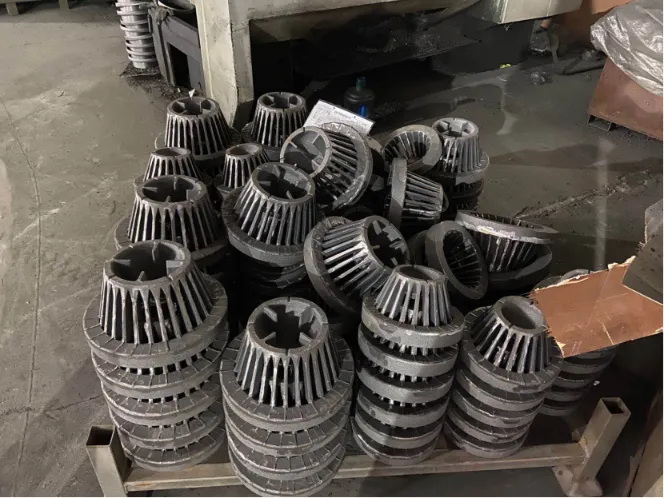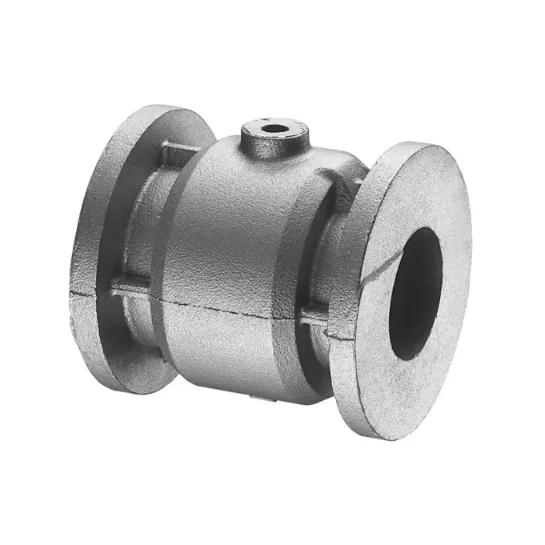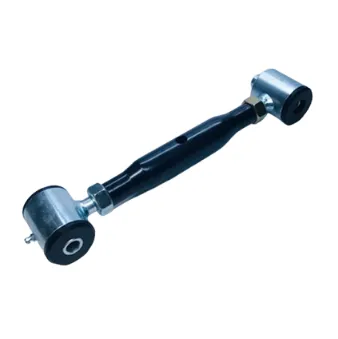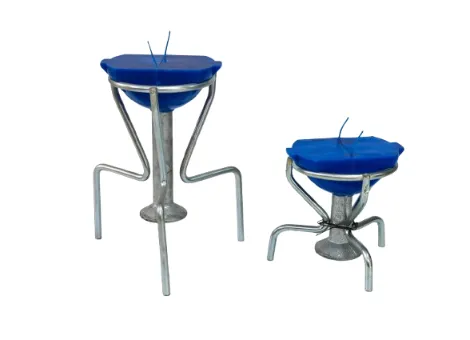
Introduction
Choosing the right material for aerospace and automotive parts is crucial for safety, reliability, and performance in tough conditions. Stainless steel stands out as a top choice.
Its strength, resistance to rust, and ability to withstand heat make stainless steel castings ideal for critical components in both industries. In this article, we’ll explore why stainless steel is a preferred material for many manufacturers.
What Makes Stainless Steel Ideal for Aerospace and Automotive Parts?
Superior Strength to Weight Ratio
When planning pieces for aerospace and automotive fields, makers need to find a mix between power and weight. Aerospace pieces, in particular, must be light to boost fuel use and total work. Yet, power matters just as much. This is true when parts face big stress, hot spots, or strong shakes.
Stainless steel gives a good power to weight mix. So, it fits both fields well. It brings the power needed to handle strong push and stress. At the same time, it keeps a fairly light shape compared to other metals like steel and cast iron. This mix is why stainless steel is often used in pieces such as aircraft engine parts, automotive suspension systems, and exhaust systems.
Corrosion Resistance
Fight against rust is a key thing, especially for parts in rough spots, wet areas, and hot places. Stainless steel’s chromium part forms a quiet oxide cover. This cover guards the material from rust and harm. And it makes sure it lasts a long time.
In the aerospace field, pieces like fuel tanks, landing gear, and engine parts deal with wet and big temperature changes. Stainless steel’s fight against rust helps these parts work well over time.
For the automotive field, parts such as exhaust systems, brake pieces, and engine parts often face wet, road salts, and hot spots. Stainless steel castings add an extra guard against rust and harm. So, these parts can handle the hardest spots.
High Temperature Resistance
Aerospace and automotive pieces often face very hot spots. From engine areas to exhaust systems, these parts can deal with heat from high to very high levels. Stainless steel does well in hot spots because of its heat fight traits.
For example, aerospace turbine blades and automotive exhaust manifolds face very hot levels. There, normal materials like aluminum might break. But stainless steel keeps its power and toughness even in high heat. This makes it perfect for these uses.
Durability and Longevity
Stainless steel is known for its long life. This makes it a smart pick for cost in the end. Unlike other materials that might wear down over time from use, rust, or heat, stainless steel castings hold their shape in hard spots. For both aerospace and automotive fields, this long life means less fix costs and longer run times.
Common Aerospace Parts Made from Stainless Steel Castings
Stainless steel castings are used a lot in many aerospace jobs. They stand out because of their toughness, exact fit, and work in tough spots.
Aircraft Engine Components
Stainless steel is used for main engine pieces such as turbine blades, compressor blades, and turbine rotors. These parts face high push, hot spots, and harm elements. So, stainless steel is the best pick. It fights heat and guards against rust.
Structural Components
Parts like aircraft frames, landing gear, and wing supports are made from stainless steel. They need this to make sure of the power and stiffness to hold heavy loads. Yet, they still keep light traits. These parts must be strong to handle forces during flight. They also need to fight rust to deal with stress from wet and high push spots.
Fuel System Parts
Pieces like fuel pumps and fuel tanks must handle high push and touch with different fluids. Stainless steel’s fight against rust and high push hold make it great for the hard spots in aerospace fuel systems.

Common Automotive Parts Made from Stainless Steel Castings
Just as in aerospace, the automotive field counts a lot on stainless steel castings for many pieces. These need high power, fight against rust, and heat hold.
Exhaust System Components
One of the most key uses for stainless steel castings in the automotive field is in the exhaust system. Pieces like exhaust manifolds, headers, and mufflers face very hot spots and harm gases. Stainless steel’s skill to fight rust and harm makes it a main material for these jobs.
Suspension and Steering Components
Parts like control arms, brackets, and steering linkages made from stainless steel bring power, toughness, and fight against rust. These pieces face high stress and rough spots. This is true in cars that run in areas with very hot or wet weather.
Engine Parts
Stainless steel is often used for engine pieces such as pistons, cylinder heads, and camshafts. They need power and heat fight to handle the strong heat made during engine work.
Brake Components
Parts like brake rotors and calipers face wear and hot spots. Stainless steel castings make sure these pieces keep high work and long life despite steady rub and heat.
Advantages of Stainless Steel Castings Over Other Materials
While stainless steel is a great pick for aerospace and automotive parts, it’s good to see how it stacks up to other materials in casting.
Comparison with Carbon Steel Castings
Carbon steel castings are often picked for power and low cost. But they miss the fight against rust and hot work that stainless steel brings. Stainless steel gives better guard against rust. And it can work at higher heat. This is key for aerospace and automotive pieces that face tough spots.
Stainless Steel vs. Aluminum Castings
Aluminum is a light and cheap material often used in aerospace and automotive fields. However, it has less power and heat fight compared to stainless steel. So, stainless steel is often the better pick for parts that need more power or must handle very hot spots. This includes engine pieces and exhaust parts.
Cost Considerations
Stainless steel castings tend to cost more than carbon steel or aluminum castings. But the longer life, higher toughness, and better work of stainless steel often make up for the start cost. When thinking about total cost over time and less need for swaps and fixes, stainless steel turns out to be a smart pick in the end.
Why Choose Custom Stainless Steel Castings for Your Parts?
Tailored to Specific Needs
When it comes to making aerospace or automotive parts, every piece must meet exact plan rules. Custom stainless steel castings let makers meet these needs by building to spot on specs based on what the buyer wants. This makes sure each part is made just right for best work.
Reduced Waste and Enhanced Efficiency
Custom casting ways cut down material trash and make making smoother. They do this by making parts that fit exact without too much cutting. This is very helpful in fields like aerospace. There, exact fit is key for safety and work.
High Precision and Quality Control
Stainless steel casting is known for its exact fit and good end look. It makes sure parts meet strict field rules. This is very important for aerospace and automotive parts. There, even a small mistake could hurt the whole setup.
Conclusion
Stainless steel castings bring many pluses for aerospace and automotive uses. These include power, fight against rust, hot work, and toughness. From aircraft engine pieces to automotive exhaust systems, stainless steel castings make sure key pieces last and can be trusted.
While there may be other materials to think about, stainless steel stays the top pick for pieces in tough spots. When you need parts that can last through time and give great work, custom stainless steel castings from BaoQi are the way to go.
FAQs
1. Why choose stainless steel for aerospace and automotive parts?
Stainless steel offers excellent strength, corrosion resistance, and high temperature performance, making it ideal for critical aerospace and automotive components.
2. How does stainless steel compare to aluminum?
Stainless steel is stronger, more heat resistant, and more durable than aluminum, making it better for high-stress and high-temperature parts.
3. What are the benefits of custom stainless steel castings?
Custom stainless steel castings ensure precise specifications, reducing waste and improving part performance in aerospace and automotive applications.
4. What aerospace parts use stainless steel castings?
Common parts include turbine blades, landing gear, and fuel system components that require strength and corrosion resistance.
5. Are stainless steel castings costlier than other materials?
Yes, but stainless steel’s durability and long lifespan make it a cost effective choice in the long run.








